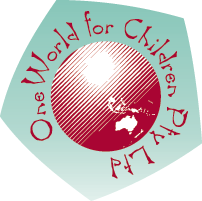
 |
WINTER 2001 NEWSLETTERChildren enjoying clay work
|
In Service
Friday 24th August
2001
|
Predictable rhythms, patterns, and cycles of nature relax and soothe children wrought with anxiety. Leisurely watching a spider spin a web, willow branches sway with the wind, a bird feed her nestlings, or even icicles melt in a warming sun helps focus a child's attention on amazing and beautiful details _ details that not only distract but temper heated emotions that boil over during family strife.
A whimsical imagination that allows children to emotionally connect with plants and animals can be a productive coping tool as children try to survive deplorable living conditions. Resilient adults often tell me that by regularly retreating to nature they came to consider trees, flowers and wildlife their most steadfast friends. Some confided their troubles to wildlife they encountered.
Spending hours outdoors with nature allows children to leisurely and intimately experience nature's gifts. Whether they build forts for fantasy (or literal escape) or simply wade streams hunting for tadpoles, the world of nature shelters children, blanketing them with a protective shield, helping them fend off the stress of irrational, illogical, and unfathomable adult behaviour.
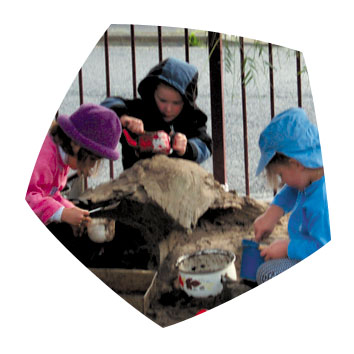 Since
nature can be so helpful to children, what can we do to ensure them access
as often as possible? Just as challenging, what nature experiences can
we provide within the confines of group care _ a system of care that is
so riddled with liability concerns that caregivers are tempted to wrap
children in cotton and leave them on a shelf until their parents arrive!
Since
nature can be so helpful to children, what can we do to ensure them access
as often as possible? Just as challenging, what nature experiences can
we provide within the confines of group care _ a system of care that is
so riddled with liability concerns that caregivers are tempted to wrap
children in cotton and leave them on a shelf until their parents arrive!
Nabhan and Trimble, in The Geography of Childhood: Why Children Need
Wild Places, make a strong case that direct contact with nature is
a basic human need, not a luxury children can afford to go without. Here's
the type of nature experiences they suggest we offer: "[Children]
need time to wander, to be outside, watch ants, to build with dirt and
sticks in a hollow of earth, to lie back and contemplate the cloud. These
simple acts forge the connections that define a land of ones own _ home
and refuge for children. They form a secure foundation to which we return
again and again in our struggle to be strong and connected, to be complete"
They remind us that children need a bounty of experiences with the natural world, especially through spontaneous, hands-on backyard/neighbourhood adventures. Although contact with nature through schools, nature centres, and museums are helpful, they cite three key strategies for introducing children to nature: opportunities for intimate involvement with plants and animals, firsthand exposure to a variety of wild animals carrying out their routine behaviours in natural habitats, and adults sharing knowledge of habitat and natural history with children.
While a wonderful experience, a once-a-year visit to the zoo or nature preserve isn't enough wilderness exposure to allow children to develop an authentic, strong connection to nature. In fact, when I've talked to resilient nature lovers, exotic wildlife adventures did not stand out in their childhood memories. Over and over, they mention daily, or at the very least, weekly, experience with familiar natural resources in their immediate neighbourhood, whether they lived in the city, the suburb, or the rural countryside. Accessible nature was far more important than flashy, exotic nature featured in cages of glass display cases. Spontaneous and regular contact with nature lead to attachments that resonate to an emotional core, usually for a lifetime.
So, the good news is that no matter how meagre our natural surroundings, they are the best place to start connecting children to nature. And lest you think otherwise, the writings of naturalist Rachel Carson caution: "Even if you are a city dweller, you can find some place, perhaps a park or golf course, where you can observe the mysterious migrations of the birds and the changing seasons. And with your child you can ponder the mystery of a growing seed, even if it be only one planted on a pot of earth in the kitchen window."
How should you begin your nature discoveries? Children are naturally close to the ground, so looking down is a good place to start! Dig in dirt, play in mud puddles, trace earth worm tracks with fingers, peer at the plants in side-walk cracks, lay on your tummies observing grass hoppers, roll on your back to watch a bird fly back and forth during nest building.
Get to know neighbourhood trees, shrubs, flowers, wild life, and waterways. Become thoroughly acquainted with all the creatures that share your immediate habitat. Go outside to play, daily and in all season. Note seasonal weather and encourage children to observe how trees, shrubs, birds, insects, and wildlife respond and survive.
Model curiosity about, and gentleness for the earth and even its smallest, most unattractive creatures. Respect their homes as you would a human's; children will learn to do the same.
Enhance your play yard to showcase the beauty of nature. Plant a variety of trees and shrubs that will change seasonally as well as provide shelter and food for nature's wildlife.
Make space for gardens! Vegetable gardens nurture the body. Herb gardens tickle the nose and taste buds. Butterfly and native bird gardens touch the imagination and soul. Gardens of ornamental grasses dance and sing with the wind, encouraging children to stop, listen, and savour.
Make moving air tangible to the eye and ear; hang banners and flags, make wind chimes from natural items.
Create cosy nooks and crannies where children can visit the daily business of nature, whether it be a spider spinning a web, a bird pecking for worms, or a milkweed pod swelling to release feathery seeds.
Include spaces that allow children to climb on and dig around natural objects such as small crabapple trees, fallen logs, steppingstones, and boulders. Create small mounds and rolling hills children can roll down. Provide large spaces for digging in dirt and sand. Include a water source, with hose and buckets, to increase discovery opportunities.
Bring nature indoors as much as you humanely, responsibly, and authentically can. Incorporate it throughout your classroom. Have children pick flowers for their parents' sign-in table. Ask them to collect items from nature to create centrepieces for mealtime. Set up an aquarium and make a terrarium. Hang prisms in windows to play with sunlight. Hang wind chimes for soothing nap-time sounds, or nature mobiles for nap-time gazing. If you have the space and time to keep a pet safe, clean, and healthy, by all means include one!
Encourage parents to include nature in their children's lives by educating them on local nature preserves and habitat restoration sites. Inform them of zoos, science museums, planetariums, greenhouses, state and local parks, botanical gardens, and natural history museums they can visit on weekends and vacations. In your newsletter, share simple activities parents can enjoy with children. Include parents in nature activities. Invite them along as volunteers when taking field trips to an aquarium or children's zoo.
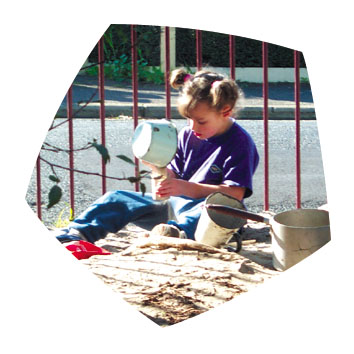 Children
come equipped with the best tools for experiencing nature: their insatiable
senses! Sight, hearing, smell, touch, and taste all come to play when
children actively explore nature.
Children
come equipped with the best tools for experiencing nature: their insatiable
senses! Sight, hearing, smell, touch, and taste all come to play when
children actively explore nature.
While not necessary, there are other tools that enrich children's sensory experiences. They don't have to be elaborate, just make sure they're safe and in good repair. Exploration tools include (but are not limited to): magnifying glass, paper bags or small buckets for specimen collection; binoculars; bug cases; Polaroid camera; sketch pad and pencil; simple identification books for trees, birds, flowers etc. paper and crayons for rubbings' metal spoons or small hand shovels for digging; sticks for prodding. School-agers will find videotaping animal behaviour or clouds interesting.
But, by far, children's most important resource for resilience is a teacher, mentor, or guide who will spend meaningful time with them _ someone who will enthusiastically and safely introduce them to a natural world brimming with beauty and endless fascinations, an engaging world worth enjoying, worth savouring, and worth protecting.
Rachel Carson said it most eloquently: "If a child is to keep alive his inborn sense of wonder, he needs the companionships of at least one adult who can share it, rediscovering with him the joy, excitement, and mystery of the world we live in." You can be that adult, that cherished someone a child chooses to walk beside on her natural path to resilience. Thank your lucky stars for the privilege.
Child Care Information Exchange #130
Thankyou to those of you who took the time to complete our quality assurance survey. Although we technically did not receive a large enough sample of responses to validate the responses, we were never-the-less pleased with the results. We have included a summary of responses here for your information:
|
Name of Training Program/Course |
Record the % Response Rate |
Record the number of useable surveys returned |
Record %of students providing a rating of good, very good or Excellent to measure |
|
Overall Performance Measure |
|||
|
% of students providing a rating of good, very good or excellent in relation to the course/module |
57.7 |
15 |
93.3 |
|
Key driver measures |
|
|
Record % of students providing a rating of agree or strongly agree to each measure |
|
You got all of the information you needed to make choices about courses/modules |
100 |
26 |
65.4 |
|
The information given to you by One World for Children gave you a clear idea of where the courses/modules might lead in terms of future career and job prospects |
100 |
26 |
88.5 |
|
You were given a clear idea of what you could achieve by the end of the course/module |
100 |
26 |
84.6 |
|
The topics covered in the course/module are/were interesting |
100 |
26 |
84.6 |
|
The topics covered in the course/module are/were sufficiently challenging for you |
100 |
26 |
88.5 |
|
The way in which you are developing / developed skill through the course/module matches the skill you are/were required to develop on the job |
100 |
26 |
92.3 |
|
The teachers/trainers have/had good knowledge of the subject they are/were teaching |
100 |
26 |
96.2 |
|
You are/were easily able to talk to your teachers/trainer when required |
100 |
26 |
96.2 |
|
You feel you will be able to / can use what you have learned in the course/module on the job / in every day life |
100 |
26 |
96.2 |
As most of you are aware we are further developing our training unit through on line learning. The structure has been developed, and at this stage offers an informative base to training at One World. The main users of our site have been people researching training organisations and requiring information about the delivery of training through One World.
We would be interested to hear from you ~ One World participants. There are a few participants that have taken the opportunity to email assessments to us as well as emailing questions.
You may recall that in our last newsletter we ran two competitions to
encourage participants to discover the fast growing internet. Thank you
to Leah Brebner, Belinda Smeal and Carly Wright for signing in our guest
book. We have extended these competitions until Wednesday 26th
September. All you need to do is have some fun completing the online quiz
and signing our guest book. Why not just simply email us your email address
so that we can add it to our address book.
Discover how using the internet can enhance your knowledge in working
in Child Care.
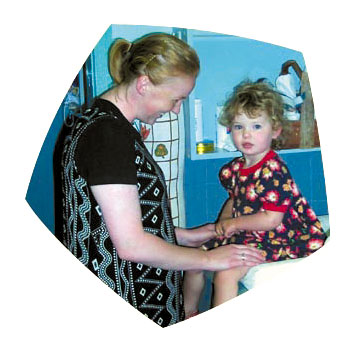 From
your written comments in our survey it is clear that many of you would
appreciate the opportunity to get together informally from time to time
with other participants to discuss your training, exchange ideas and to
provide mutual support. At various times over the past two to three years
we have endeavoured to establish such groups without much success.
From
your written comments in our survey it is clear that many of you would
appreciate the opportunity to get together informally from time to time
with other participants to discuss your training, exchange ideas and to
provide mutual support. At various times over the past two to three years
we have endeavoured to establish such groups without much success.
An idea that we have decided to trial, is to form regions around Victoria that would incorporate all the Children's Services that One World visit. These regional groups would be facilitated by One World trainers, but developed by the participants. The first step is to gain a response from those people who would be interested. Once interested participants have been gathered, we would ask for various "regional volunteers" that One World trainers would be communicating with. Basically, the volunteers would arrange a place and date for the meeting, then the regional trainer would arrange for any necessary information to be sent out to interested participants.
Geelong/Werribee
Gisborne/ Sunbury / Melton/Woodend / Kyneton / Bacchus Marsh
Bendigo / Castlemaine
Shepparton / Kilmore
Dandenong and surrounding suburbs
Melbourne
The frequency of these study groups would be determined by the regional participants themselves. ie quarterly or 6 monthly etc.
To get the ball rolling we need you to indicate to us which regional group you would like to participate in, and whether or not you would be interested in taking on the role of regional volunteer in your preferred regional group.
We would like to organise the first get-to-gether meeting in each region over the next two to three months, and would therefore appreciate your earliest reponse. Simply email or phone Snez or Carol with your preferred region. We look forward to meeting with you all soon.
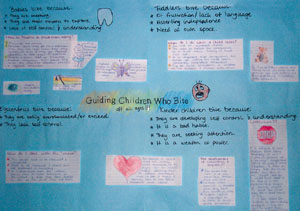 At
times we have run into the problem of trainees saying that they have sent
in assessments, that have not reached our office. An easy way of eliminating
this problem is by photocopying your assessments
before sending them to us. Unfortunately if an assessment does not reach
us, you will be required to re do the assessment.
At
times we have run into the problem of trainees saying that they have sent
in assessments, that have not reached our office. An easy way of eliminating
this problem is by photocopying your assessments
before sending them to us. Unfortunately if an assessment does not reach
us, you will be required to re do the assessment.
It has also been necessary for trainers to recall individual assessments from trainees. Once again it is important to hold onto all assessments in an organized way should this occur to you. If you do not have an assessment that is asked of you, you may need to re do it!
Please ensure that all assessments, especially posters, are named and dated. (name the actual piece of work, not just the envelope that it is sent in.)
*We have a few assessments that have not been assessed because we are unable to identify them.
Speaking of POSTERS and DISPLAYS, you may have realised that there are a few assessments where you are required to do a poster or display. We hope that you have enjoyed constructing them as we have had whilst assessing them. We have included some examples of the work that we have seen. We have been impressed of the quality of these posters, so keep up the professionalism in these assessments, as they are a very visual way of communicating with the families that use your centre. (unfortunately we did not have our camera to capture the creativity from Mini Mites Children's Centre in Warragul where these displays were particularly creative with combinations of posters and displays. Well Done! )
Why not send your assessments to us via e-mail?
It will save you time and your assessments will get to us promptly and
safely.
All trainers have direct email addresses, so you can send all assessments
to individual trainers.
carol@oneworldforchildren.com.au
michelle@oneworldforchildren.com.au
tammy@oneworldforchildren.com.au
liz@oneworldforchildren.com.au
susan@oneworldforchildren.com.au
karyn@oneworldforchildren.com.au
snez@oneworldforchildren.com.au
A number of trainees have also expressed interest in undertaking Diploma training. As most of you would be aware here at One World we offer training specifically to the children's services industry from a Certificate II level to the Advanced Diploma.
If you are interested in continuing your studies from your current level, remember that you have a maximum time of three months to renew a traineeship.
Just a reminder that the enrolment fee that all trainees pay are an annual fee. These fees are in accordance with the Office of Employment, Training and Tertiary Education fees and charges policies.
The fee is: $290.00.
Concessions are available for relevant pension card holders. Please ask training staff for further details.
All fees must be paid in full within the first 4 weeks from receiving
your One World invoice. Participants who fail to pay their fees may have
their visits suspended or have their traineeship cancelled. All administration
enquiry's may be made to our Administration Officer, Snez on 52 685 333.
All enrolment fees must now be paid by cheque, money order, or credit card. Please note that trainers can no longer accept any cash payments. Thank-you for your assistance in this matter.
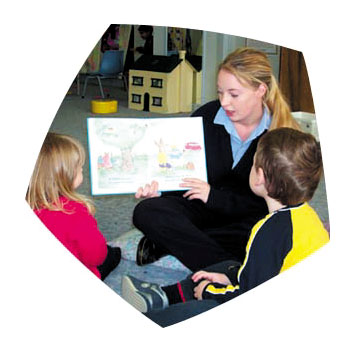 |
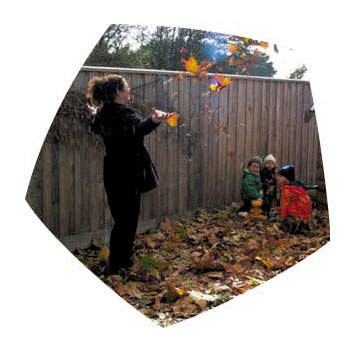 |
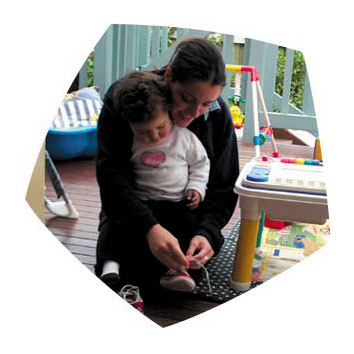 |